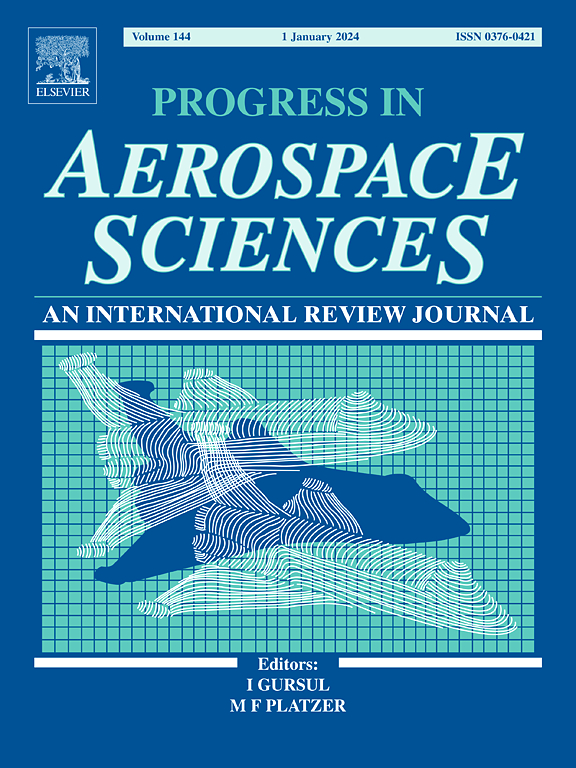The state of hybrid artificial intelligence for interstellar missions
IF 16.2
1区 工程技术
Q1 ENGINEERING, AEROSPACE
引用次数: 0
Abstract
Interstellar missions will require a high degree of autonomy mediated through artificial intelligence (AI). All interstellar missions are characterised by 50-100-year transits to extrasolar systems. High system availability demands that interstellar spacecraft are self-repairable imposing significant demands on onboard intelligence. We review the current status of artificial intelligence to assess its capabilities in providing such autonomy. In particular, we focus on hybrid AI methods as these appear to offer the richest capabilities in offsetting weaknesses inherent in paradigmic approaches. Symbolic manipulation systems offer logical and comprehensible rationality with predictable behaviours but are brittle beyond their specific applications (a charge that may be levelled at neural networks unless the transfer learning problem can be resolved). More modern approaches to expert systems include Bayesian networks that incorporate probabilistic treatment to accommodate uncertainty. Artificial neural networks are fundamentally different. They are opaque to analysis but potentially offer greater adaptability in application by virtue of their ability to learn. Indeed, deep machine learning is a variation on neural networks with unsupervised neural front ends and supervised neural back ends. Reinforcement learning offers a promising approach for learning directly from the environment. There are inherent weaknesses in neural approaches regarding their hidden mechanisms rendering their distributed representations opaque to analysis. Hybridising symbolic processing techniques with artificial neural networks appears to offer the advantages of both. Human cognition appears to implement both neural learning and symbolic processing. There are several approaches to such hybridisation that we explore including knowledge-based artificial neural networks, fuzzy neural networks, Bayesian methods such as Markov logic networks and genetic methods such as learning classifier systems. Markov logic networks propose a natural correlation between Bayesian probability and neural weights but mapping representation of symbols into switching neurons is less clear (though vector symbolic architectures present an approach) while learning classifier systems are reinforcement learning methods that are promising for interacting with the physical world. We conclude that current AI may not yet be up to the task of interstellar transits and flybys let alone for physical interaction with unknown planetary environments. Certainly, AI is incapable of interactive encounters with extraterrestrial intelligence.
用于星际任务的混合人工智能的状态
星际任务将需要通过人工智能(AI)介导的高度自治。所有星际任务的特点都是50-100年的太阳系外凌日。高系统可用性要求星际飞船具有自修复能力,这对机载智能提出了很高的要求。我们回顾了人工智能的现状,以评估其提供这种自主性的能力。我们特别关注混合人工智能方法,因为这些方法似乎提供了最丰富的能力来抵消范式方法固有的弱点。符号操作系统提供了逻辑和可理解的理性,具有可预测的行为,但在其特定应用之外是脆弱的(除非迁移学习问题可以解决,否则可能会对神经网络提出指控)。更现代的专家系统方法包括贝叶斯网络,它结合了概率处理来适应不确定性。人工神经网络从根本上是不同的。它们对分析来说是不透明的,但由于它们的学习能力,可能在应用中提供更大的适应性。事实上,深度机器学习是神经网络的一种变体,具有无监督的神经前端和监督的神经后端。强化学习为直接从环境中学习提供了一种很有前途的方法。神经方法在其隐藏机制方面存在固有的弱点,使其分布式表示无法分析。混合符号处理技术与人工神经网络似乎提供了两者的优点。人类的认知似乎同时实现了神经学习和符号处理。我们探索了几种方法来实现这种混合,包括基于知识的人工神经网络、模糊神经网络、贝叶斯方法(如马尔可夫逻辑网络)和遗传方法(如学习分类器系统)。马尔可夫逻辑网络提出了贝叶斯概率和神经权重之间的自然关联,但将符号表示映射到切换神经元中不太清楚(尽管向量符号架构提供了一种方法),而学习分类器系统是强化学习方法,有望与物理世界进行交互。我们的结论是,目前的人工智能可能还无法胜任星际穿越和飞越的任务,更不用说与未知行星环境的物理交互了。当然,人工智能无法与外星智能互动。
本文章由计算机程序翻译,如有差异,请以英文原文为准。
求助全文
约1分钟内获得全文
求助全文
来源期刊

Progress in Aerospace Sciences
工程技术-工程:宇航
CiteScore
20.20
自引率
3.10%
发文量
41
审稿时长
5 months
期刊介绍:
"Progress in Aerospace Sciences" is a prestigious international review journal focusing on research in aerospace sciences and its applications in research organizations, industry, and universities. The journal aims to appeal to a wide range of readers and provide valuable information.
The primary content of the journal consists of specially commissioned review articles. These articles serve to collate the latest advancements in the expansive field of aerospace sciences. Unlike other journals, there are no restrictions on the length of papers. Authors are encouraged to furnish specialist readers with a clear and concise summary of recent work, while also providing enough detail for general aerospace readers to stay updated on developments in fields beyond their own expertise.
 求助内容:
求助内容: 应助结果提醒方式:
应助结果提醒方式:


